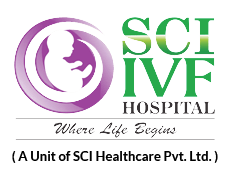In vitro fertilization (IVF) has revolutionized the field of reproductive medicine, offering hope to countless couples struggling with infertility. Over the years, numerous advancements have been made to improve the success rates of IVF procedures. One such advancement is laser-assisted hatching, a technique that has shown promising results in enhancing the chances of implantation and successful pregnancy.
Laser-assisted hatching involves the use of a focused laser beam to create a small opening or thinning in the outer shell of the embryo, known as the zona pellucida. This delicate procedure is typically performed on embryos before they are transferred to the woman’s uterus. The purpose of creating this opening is to facilitate the embryo’s ability to break through the zona pellucida and implant itself into the uterine lining.
The zona pellucida plays a crucial role in early embryo development, providing a protective barrier for the developing embryo. However, in some cases, the zona pellucida may become hardened or thickened, making it difficult for the embryo to hatch and implant. This is especially true for older women or individuals with a history of failed IVF attempts.
By using a laser to precisely thin or open the zona pellucida, laser-assisted hatching aims to improve the chances of successful implantation. The procedure is typically performed by highly skilled embryologists, who carefully control the intensity and duration of the laser to create a precise opening without damaging the embryo.
Laser-assisted hatching offers several potential benefits to couples undergoing IVF. Firstly, it can enhance implantation rates, particularly in cases where previous IVF attempts have failed. By creating a small opening in the zona pellucida, the embryo’s chances of successfully attaching to the uterine lining are increased.
Moreover, laser-assisted hatching can be particularly beneficial for individuals with certain medical conditions that affect the quality of the zona pellucida or for those undergoing advanced maternal age IVF treatments. As women age, the zona pellucida may become thicker and harder, making it more difficult for embryos to hatch naturally. Laser-assisted hatching helps overcome this barrier and improves the likelihood of implantation.
It is important to note that laser-assisted hatching is not suitable for every patient undergoing IVF. The decision to use this technique is based on individual factors, including the woman’s age, previous IVF outcomes, and the quality of the embryos. The procedure is typically recommended for specific cases where the embryologist believes it will provide a benefit.
Like any medical procedure, laser-assisted hatching carries a small risk of complications. However, when performed by experienced professionals, the procedure is generally safe. The embryologists are well-trained in handling embryos and use advanced technologies to ensure the best possible outcome.
In conclusion, laser-assisted hatching is a promising technique in the field of IVF that aims to improve the chances of successful embryo implantation and pregnancy. By creating a small opening in the zona pellucida, this procedure helps embryos overcome potential barriers and enhances the chances of implantation, particularly for individuals with certain medical conditions or those undergoing IVF at an advanced maternal age.



